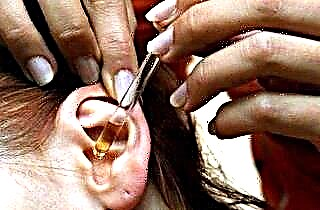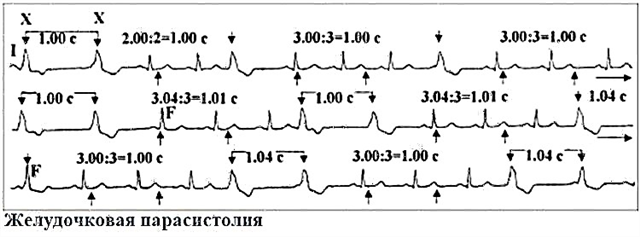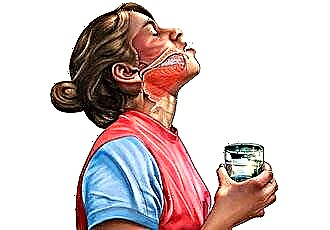Ear care is an integral part of the personal hygiene of a modern person. From childhood, the child is taught to carefully monitor the cleanliness of the ears - daily wash the ears with soap and wipe them dry with a towel. Doctors strongly do not recommend cleaning the ear canal with cotton swabs (and even more so with other devices such as matches). How to get rid of excess wax and dirt in your ears? Washing will help.
When rinsing, a solution is poured into the ear canal that has surface-active, disinfecting, antiseptic or dissolving properties. After a while, the remaining liquid is removed from the ear canal along with dissolved particles of dust, dirt, etc.
Washing can be used not only to remove wax, but also to cleanse the ear canal from pus in case of otitis media, as well as to remove small foreign objects from the ear canal.
In this article we will tell you how to rinse your ear at home. Subject to all the rules, the washing procedure is absolutely safe.
When should you wash your ears?
To keep your ears clean and healthy, it is sufficient to wash them daily with warm water and soap, using your fingers or a washcloth. Ear rinsing should not be part of your daily hygiene routine, but only when needed.

Water entering the ears can cause inflammation. So, frequent maceration (soaking) of the delicate skin of the ear canal threatens with increased sulfur secretion, as well as the development of otitis externa. There is even a diagnosis of "swimmer's ear" - the so-called condition, the symptoms of which are swelling, redness and itching in the ear canal. The reason for this violation is the frequent ingress of water (especially cold and polluted) into the ears. In some cases, "swimmer's ear" turns into otitis externa. For prophylaxis, divers, swimmers and just amateurs of swimming are recommended to rinse their ears with alcohol solutions (for example, furacilin alcohol). Alcohol, unlike water, evaporates very quickly and does not cause maceration. It also has disinfectant properties.
Lavages are also indicated for otitis externa and otitis media. In acute otitis media, lavage is carried out only after consultation with the attending physician. Usually, washing is carried out before instillation, to remove sulfur, dirt and pus from the ear canal - this ensures better distribution of the drug and its rapid absorption.
Washing (as well as instillation) is categorically contraindicated in the presence of lesions in the eardrum. If the solution used gets into the middle ear cavity, it can lead to inflammation, the development of hearing loss and even hearing loss.
Sometimes otitis media ruptures the tympanic membrane. The patient does not always know about the condition of his eardrums. That is why, before you wash your ears yourself, you need to be examined by an ENT.
Flushing with some solutions is used to remove sulfur and sulfur plugs. How to rinse your ears to get rid of plugs? For this purpose, hydrogen peroxide is suitable, as well as special pharmaceutical solutions - cerumenolytics.
Hydrogen peroxide rinsing
Let's talk about how to rinse your ears with hydrogen peroxide at home.
Hydrogen peroxide is an affordable and safe remedy. It can be used by both adults and children. Peroxide, in contact with sulfur, begins to fizzle and foam; this produces many oxygen bubbles. This allows the sulfur to dissolve and the soapy fragments can be easily removed with a napkin. To rinse the ear with peroxide, use a dropper, small bulb, or syringe (no needle!). To flush the ears, 1-2 cubic centimeters of solution are enough. Follow this algorithm:
- Warm the liquid before injecting it into the ear canal (for example, by holding a peroxide pipette in the palm of your hand).
- The person who is having their ear washed should lie on their side.
- Hydrogen peroxide 3% is injected into the ear canal. Do not inject peroxide at high pressure.
- You need to stay in a lying position for several minutes. This may cause hissing and tingling sensations - this is normal. If the instillation of peroxide causes pain, the procedure should be stopped immediately.
- After a few minutes, the person rises and removes the remaining peroxide and sulfur fragments with a cotton pad or napkin. The procedure is repeated for the second ear.
For periodic removal, one procedure every 3-4 months is enough. If a plug has formed in the ear, a course of procedures will be required to dissolve it (usually 5-10 washes are enough).
Washing with alcohol solutions
Alcohol solutions are used to wash the ears for infectious diseases - otitis externa and otitis media (both acute and chronic), "swimmer's ear", furunculosis of the ear canal. Alcohol solution for washing your ears at home can be an effective first aid before going to an otolaryngologist. Using them as the only treatment is not recommended in order to avoid complications.
In most cases, for the treatment of otitis media, drugs are required not only for local action, but also for systemic (tablets, injections), and a specialist should prescribe them.
At home, you can use furacilin alcohol. Boric alcohol is also often used, but recent studies have shown the toxicity and low efficacy of this agent. Boric alcohol is currently considered an obsolete drug.
To rinse the ears with an alcohol solution, use a sterile syringe without a needle or a pear. The solution heated to body temperature is injected into the ear canal. In this case, the person turns his head up with the disturbing ear, and then lowers it so that the liquid spills out. After the procedure, the alcohol evaporates quickly, so there is no need to wipe the ear canal dry.
Vegetable oils
A fairly well-known folk remedy for washing the ears is vegetable oil. Olive, almond and other oils are used. There are also oil-based sulfur removal preparations in pharmacies, for example, Vaxol, Cerustop. The oil softens the earwax, but does not dissolve the components. That is why oil drops will help with small "fresh" sulfur plugs.
Washing is best done before bedtime.
A small volume of oil heated to about 37 ° C is injected into the ear canal and closed with a cotton swab. In the morning, the cotton wool is removed, and the ears are washed with warm water and soap. To soften and remove the cork, you must repeat the procedure for a week. If the plug does not come out, see a doctor.
Special solutions
A modern person no longer needs to figure out how to rinse his ear - there are special drugs in pharmacies - cerumenolytics, which quickly and safely dissolve sulfur. Cerumenolytics are what otolaryngologists wash their ears with.
There are several groups of these drugs. They differ in composition and mechanism of action.
- Water-based preparations - "Aqua Maris Oto", "Audisprey" and others. They contain seawater, which softens sulfur in much the same way as ordinary boiled water. They are suitable for removing sulfur, but have little effect on plugs.
- Preparations containing a solvent (hydrogen peroxide, glycerin, chlorobutanol) - "En'jee", "Cerumenex", "Otinum".
- Oil-based cerumenolytics - Klin-Irs, Vaxol, Cerustop, Removax, etc. They lubricate the ear canal and soften the sulfur, facilitating its discharge.
- Containing surfactants (surfactants).For example, "A-cerumen" contains surfactants - surfactants that break down the protein and lipid components of sulfur. When used, sulfur plugs quickly dissolve and leave the ear canal.
- Containing carbamide peroxide - Debrox, Murain and others. Any carbamide peroxide earwash will soften the wax but will not dissolve it.
In some cases, the action of the cerumenolytic is not enough to completely dissolve the cork. If you are unable to wash the cork yourself, see your doctor. Otolaryngologists use not only solutions to remove plugs, but also special devices - Janet's syringe, an aspirator (electric suction device), as well as ear probes.
The procedure for removing an ear plug from a doctor is painless, and moreover, it is safer and more effective than trying to solve this problem on your own.



